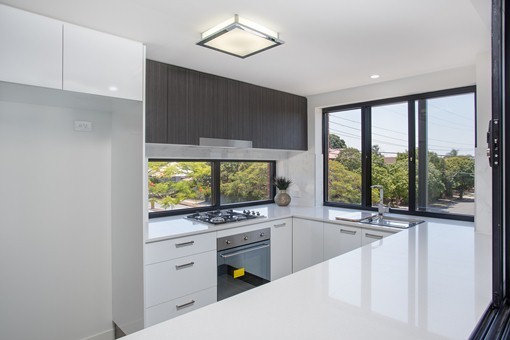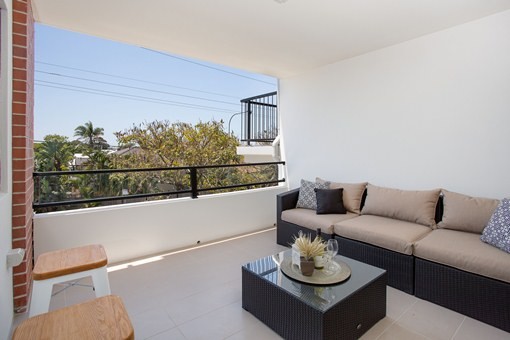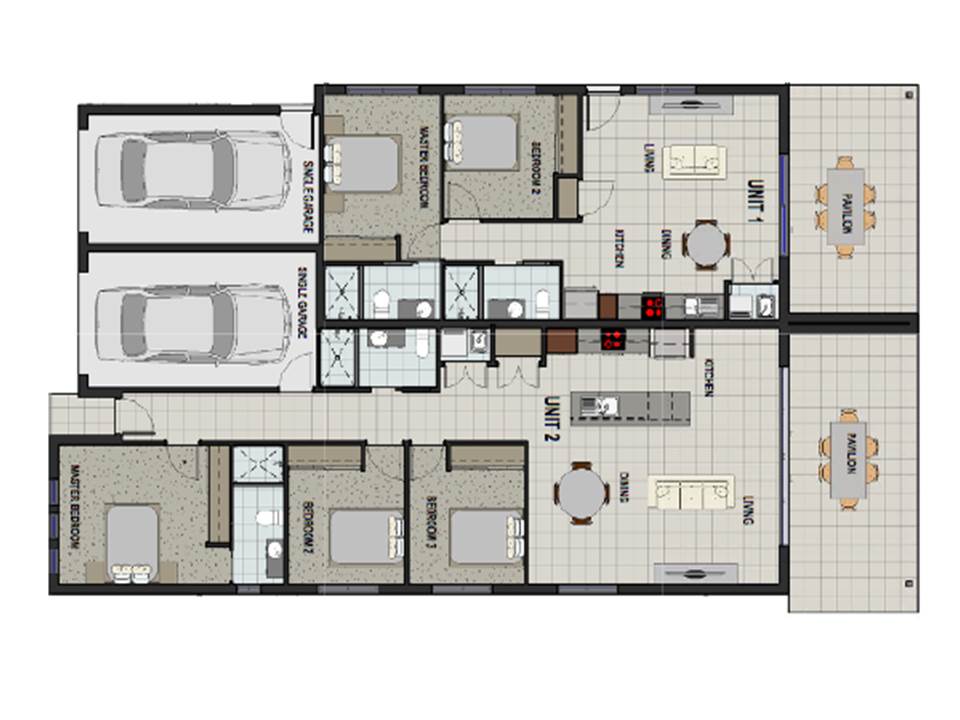|
Saturday, January 25 2014
With rates near record lows there is temptation to lock rates in. But will this actually be the best move and are the savings really there? Before fixing there are a number of things to consider.
Do you eally think you will beat the bank?
3 year fixed rates are sitting around 5.34% and there are variable rates around 4.8%. So straight away you are locking yourself into a higher rate. On a $300,000 loan this would mean $1620 a year more in interest.
And here’s the catch people thinh they are ahaed by fixeing when the variable rate increases beyond the fixed rate. This is incorrect. Your breakeven point is not when variable rates reach 5.34%. The breakeven point is determined by the actual cost of funds over the fixed term. If the loan was interest only your total interest cost over 3 years is $48060. If rates on average remain around 4.8% for the next 12 months and average 5.34% in the second year the rates would have to average above 5.88% for the final 12 months before you cam out ahead.
Remember banks are very good at making profits. They don’t set fixed rates on the basis of losing the bet. They are betting you will end up paying more interest under the fixed rate than if you stayed on variable.
Penalties
Penalties can be into the thousands if you have to exit a fixed rate loan at the wrong time. Remember the timing of exiting a loan may not be of your choosing
Loss of flexibility
Generally there is limited scope to make large lump sum reductions during fixed period - eg you could be on a low rate but can't pay off the loan any faster . Also generally no access to redraw - what if you need those funds for a rainy day?
Also most fixed rate facilities do not offer genuine 100% offset accounts.
You're stuck
What if you require extra funds and the bank says no. You might be forced to refinance and get a nice big penalty on the way out. A realistic proposition in the current market with lenders tightening their policies.
Get advice Saturday, January 25 2014
Resources states Western Australia, Northern Territory and Queensland continue to lead the country. CommSec's quarterly State of the States report shows WA in front on retail spending but lagging on new housing construction. The Northern Territory is now the second strongest economy, backed by strong economic growth, construction work, retail trade, new housing and a substantial reduction in unemployment. Queensland led the way in terms of business investment and came in third strongest on economic growth, retail trade and construction, with a notable improvement in housing finance approvals. Saturday, January 25 2014
Australian houses are still relatively affordable, even though prices have grown faster than those in other major economies, says credit ratings agency Fitch. The Fitch Global and Housing Outlook Report says that in 2014 Australian prices are forecast to outstrip even countries recovering from the GFC. But Australian houses continue to be relatively affordable, thanks to low interest rates and high incomes with only modest employment declines. Fitch says Australian house prices have more than tripled since 1997. Even though prices fell 4% between 2011 and mid-2013, they stayed above those of the UK, our nearest rival. The Sydney Morning Herald reported that house prices compared to per capita GDP are the world's second most favourable. Friday, January 24 2014
People often focus on interest rate when shopping for a loan but there are a range of fees a lender may charge that can make that oh so low rate not so great. Application fees A number of lenders will promote no application fee, but will then charge for valuations and settlement that can end up costing more than $600. IMPORTANT NOTE – I often come across people who get very hung up on paying fees particularly application fees. Certainly you don’t want to pay more than you have to but your priority should be selecting the right loan and structure. Basing your decision on a $600 fee when you are planning to borrow a couple hundred thousand dollars is fairly short-sighted given that making the wrong selection could cost you thousands. Valuation fees Legal/document fees Settlement fees Lenders mortgage insurance (LMI) Service fees Offset fees Switching fees Get advice Friday, January 24 2014
Businesses expect a better trading year in 2014 amid strong profits and a reduction in operating costs. The Commonwealth Bank future business index, which gauges the sentiment of mid-size businesses with a turnover of $10 million to $100 million, suggests businesses are experiencing a sharp increase in confidence. The index was 17 points in the December quarter, its highest level since the survey began in September 2011, and up from 10.8 points in the previous three months. "The vast majority of businesses are anticipating a more prosperous year ahead," said the bank's general manager for corporate financial services, Michael Cant, when the report was released on Thursday. "Notwithstanding the buoyant sentiment .... there remains a level of conservatism as businesses continue to focus on managing costs." The survey found the top three challenges facing business are weak consumer confidence, a falling Australian dollar and uncertainty about government policy decisions. There are also increasing concerns about skills shortages. However, 77 per cent of organisations expect a better performance in 2014 compared with 2013. The survey's revenue index for the next six months jumped to 41 points in the December quarter from 25 in the September quarter, the profit forecasts index increased to 27 from 15, and the operating costs index eased to 29 from 33. Commonwealth Bank chief economist Michael Blythe said the sharp improvement in revenue and profit expectations was quite encouraging. "We're seeing this improved sentiment flow through to other important areas, such as an enhanced appetite for risk and an expected increase in capital expenditure and headcount," he said. Friday, January 24 2014
Two out of three Australian businesses are more optimistic about growth this year compared to 2013. Dun & Bradstreet's Business Expectations Survey shows that 68% of respondents expect positive sales, profits, selling prices, investment and employment. The survey found that 18% of businesses are planning to access new finance during the first quarter, the highest response since the last quarter of 2011.Thirteen percent of businesses plan to increase capital spending, compared to 5% who will decrease spending. Hiring plans have also strengthened, with 15% of businesses intending to take on more staff, taking D&B's employment index to a three-year high of 8.8 points. Thursday, January 23 2014
Monthly home loan approvals reached the highest level in four years in November. The Australian Bureau of Statistics (ABS) says there were more home loan approvals in November 2013 than any other month in the past four years. The resource-rich states of Queensland and Western Australia approved 15% and 12% more home loans respectively than the same time last year. Tuesday, January 21 2014
Brisbanites will have access to an innovative double decker public transport tunnel which will accommodate both rail and busway services under the new “UBAT” (underground busway and train) tunnel. The project is budgeted at $5 billion, around $3 billion less than previous Cross River Rail proposal. Premier Campbell Newman announced the Underground Bus and Train project, a 5.4 kilometre tunnel with two train lines in the lower section and two busway lanes in the upper section. “We’ve taken two of Brisbane’s major congestion challenges – the Merivale train bridge and the Cultural Centre bus precinct – and come up with an affordable and elegant solution. “The project we are announcing today delivers the public transport services needed for the next 50 years. “A single 15-metre-wide tunnel will be built, requiring the largest borer ever used in Australia – almost two metres wider than the Clem7 and Airport Link tunnels.” Mr Newman said a public competition would be held early in the New Year to come up with a name for the project. Lobby group Rail Back on Track described the UBAT plan as exciting and welcome news, but spokesperson Robert Dow said it must be constructed with future capacity demands in mind. Tuesday, January 21 2014
Spending is set to lift across the Australian economy this year, after healthy and sustainable growth continued during December, according to new research released today. The Commonwealth Bank Business Sales Index (BSI), which tracks the value of credit and debit card transactions processed by Commonwealth Bank, saw spending rise by a seasonally adjusted 0.4% in December, bringing annual growth for 2013 to 10.6%. Seasonally adjusted data excludes certain seasonal factors to give a more accurate month to month comparison. “The spending increase in 2013 has provided a strong foundation for further increases in 2014,” said CommSec economist, Savanth Sebastian. “The housing recovery continues to gather momentum, while rising wealth levels, low interest rates and a recovering share market is supporting consumer confidence and in turn spending. “The lower Australian dollar should also provide a boost to exports in coming months and help to alleviate the risks surrounding the rebalancing of the economy. “ Friday, January 17 2014
Just as lenders have different views on how income is treated, the same applies to expense. Household expenses Loans with other lenders The net result of this approach is that it makes your loan repayments appear much higher than they really are. This can have quite a significant impact for property investors with several properties who want to keep building their portfolio. It is not unusual for property investors to hit a road block with their lender because they can not pass their serviceability test – even though they clearly have sufficient capacity to fund additional properties. There are however some lenders that wil asess other bank loans at their actual repayment which can significantly increase your boorowing capacity. Joint loans Your loan commitments will be based on total loan commitments of $800,000, not $600,000 (New loan $400000 plus half of investment loan) as many people expect. This is because as a party to the loan you are jointly and severally responsible for the debt. For example if your friend got injured and couldn’t make their share of the loan repayments you would have to make the repayments or risk losing the property. Therefore the full $400,000 will be recorded as your commitment. To make matters worse only half the rent can be used as your income as this is all you are legally entitled to. Aside from the other issues and risks that can be associated with joint ventures it is worth considering how it will impact on your future plans. Guarantees Credit card and personal loans So if you have a card with a limit of $20,000, most lenders will view this as a $600 a month loan commitment. Rent Child maintenance In a number of the above situations some lenders will assess aspects differently which will be more favourable to your borrowing capacity which is why is important to have your situation propertly asessed by a broker. If you only talk to one lender you will be limited to their policies. Contact us to discuss your home loan requirements or a for a review of your current lending. Thursday, January 16 2014
This Boutique apartment complex has come up on our radar.
The units are complete What opportunities are you missing? Contact us for an initial discussion. What are the secrets you need to know before you start investing? Tuesday, January 14 2014
Raine & Horne are tipping 7% plus growth for Brisbane in the coming year. While Brisbane finished behind Sydney and Melbourne last year, they believe it is well-placed for a comeback with tight supply and growing demand. Raine & Horne’s general manager for Queensland, Steve Worrad, said that while activity has slowed over the holidays it’s often being reported as up 25% for the same time last year, with listings down by as much as 60%. “Property prices in the southern capitals enjoyed a robust 2013, with the median house price in Sydney, for example, between $665,000 and $712,000 depending on who you listen to, while the median house price in Brisbane is an affordable $445,000,” said Worrad. “This gives Sydney retirees, especially, scope to sell a family home tax-free, and make a lifestyle shift to Brisbane and add the difference to their retirement savings.” He noted a new listing of a two-bedroom modern apartment, 52/2 Masthead Drive, Cleveland, which they expect will fetch $300,000 to $320,000. RP Data notes that it previously sold in December 2011 for $262,000. “While attracting local interest, we’ve fielded enquiries from Melbourne-based retirees for this spacious apartment, which makes sense as it is located on the sought-after Raby Bay Marina, and has a beach at the end of the street and excellent river boardwalks,” he said. Fly In/Fly Out workers are also set to be a growing demographic in Brisbane, whether they’re working in the mines or investment banking, he predicted. Brisbane’s New Farm in particular was mentioned as a good performer over 2013, with days on market at just seven. This comes as confidence builds in Queensland economic sectors, with Australian Bureau of Statistics data seeing a 4.9% increase in trend dwelling approvals and a 0.5% increase in retail turnover during November of 2013. This may help increase the supply that Raine & Horne notes is currently lacking. Acting Treasurer and Minister for Trade, John McVeigh, said that they were cutting red tape and the cost of business to help maintain Queensland's job creation and speed up building approvals. “Importantly, this increase in trend dwelling approvals follows 23 consecutive monthly increases, with approvals now 50.6 per cent higher than December 2011," said McVeigh. “This figure was driven by private other dwelling approvals, such as townhouses or apartments, which were 78.4 per cent higher over the year and at their highest level on record in November 2013," he said. “We’re working steadfastly to grow the property and construction sector, implementing a $15,000 Great Start Grant as part of the 2012-2013 Budget which has already seen 4100 grants given to Queenslanders.” Tuesday, January 14 2014
First-home buyers are being attracted to affordable master-planned communities on the outskirts of Brisbane, according to the Real Estate Institute of Queensland and St George Bank. The Courier-Mail reported that North Lakes and Springfield head the list of outlying suburbs with a median house price below $450,000. North Lakes, 25km north of the Brisbane CBD, recorded 377 sales in the 12 months to September. Forest Lake and Springfield Lakes, 22km west, achieved 600 sales between them. St George Bank head of retail Ross Gillam says loan applications are up 20% across Brisbane's western corridor. "The region has huge potential for growth, with concentrations of employment, retail services, infrastructure and transport links," Gillam says. Thursday, January 09 2014
As is typical for this time of year the various commentators and researchers are making their predictions for the year ahead in property. General consensus seems to be for growth between 3 - 5% for capitals excluding Hobart. In a recent webinar Terry Ryder put Brisbane at the top of the tree at 10% for 2014. Based on what I am seeing already I share Terry's view Wednesday, January 08 2014
Just negotiated another 1% rate discount for a client. Another happy client. Contact us to discuss your home loan requirements Tuesday, January 07 2014
Hot off the press - New options located. Price Circa $445000 Estimated weekly rent up to $720* Dual income properties provide the investor with two rents instead of one and yet the build cost is roughly the same as a standard house. This means in most cases the properties will be cash positive. The properties have
When viewed from the road it appears to be a high-quality standard residential dwelling which means that it has been accepted by Queensland’s leading developers of owner-occupier land estates. It’s when you look at the floor plan that the revolutionary design becomes clear. What appears to be one dwelling is in fact two dwellings. There are minimal outgoings with only one set of rates and no body corporate fees. Because the dual dwelling is constructed of such a high standard, these are able to be constructed in owner- occupier dominated estates, helping to drive capital growth. Example Summary of Inclusions:
* Note different specifications may apply for this option. What opportunities are you missing? Contact us for an initial discussion. What are the secrets you need to know before you start investing? Tuesday, January 07 2014
2013 proved once again that fence sitting is a costly exercise. While many would be property buyers sat back and span their wheels waiting for the heard to jump into the market a handful of people took action and more than likely picked the bottom of the market. According to RP Data Brisbane house values increased by 5.3 per cent over 2013 compared and unit values 3.5 per cent. To put this in perspective a $400,000 property purchased 12 months ago at that rate of growth would now be $421,200. And if the growth rate is repeated in the next 12 months it will be $443,523. A number of independent researcher expect the Brisbane market to continue to grow over 2014 as it makes up time from a few years of subdued growth and it's relative affordability to the Sydney and Melbourne markets. What opportunities are you missing? Contact us for an initial discussion. What are the secrets you need to know before you start investing? Tuesday, January 07 2014
Demonstrating your ability to repay the loan is essential to successfully qualifying for a home loan. This means in one form or another you will need to demonstrate that after expenses such as living, and other financial commitments you have sufficient disposable income to meet loan repayments. Lenders have different attitudes towards certain types of income but there are many areas where they tend to be relatively consistent. This is particularly the case where a loan requires mortgage insurance. As many lenders will use the same mortgage insurer and therefore be subject to the same credit policy. The first thing you should be aware of is that the amount you can qualify for can vary significantly from lender to lender. Even between the major banks there can be significant variations. For example across a panel of over 30 lenders, a couple earning $75,000 per annum could potentially borrow anywhere between $235,000 to $512,000, based on the same information. This is because each lender has differing credit policies and formulas they use to determine your credit worthiness. So if you are only considering one or two lenders then you could be cutting yourself off from plenty of options. Employment Full time and permanent part time Lenders are looking for stability in employment. Generally at least 6 months in one job, and at least two years or more in the same industry. No probation. If you don’t have 2 years in the same industry then they will be looking for at least 12 months in your current position. If you have a history of changing jobs or professional on a regular basis then this could go against you. Casual Generally at least 12 months employment or 2 years in the same industry. Lenders may want to see 12 months worth of income to establish an average earning Self-employed or contract worker In almost all cases lenders will require you to be trading for a minimum of 2 years. For most businesses lenders will also require a registered ABN for 2 years. If an ABN can not be produced some lenders will accept a letter from your accountant confirming the business has been trading for 2 years. Working in a family business Most lenders will treat this the same as being self-employed and therefore will want to see a 2 years trading history for the business. Income In terms of income lenders are trying to establish regular and reliable sources of income. So if you are an employee, have been in your job for some time, and are paid the same amount week in week out then 100% of your based gross income will be considered. The areas where it becomes greyer are as follows: Overtime If overtime is standard for your industry (such as nursing) then most lenders will allow 100% to be included for servicing. It may however be necessary to provide additional documentation such as group certificates or a letter from your employer to confirm that overtime is a standard requirement of your job. If it is not industry standard then two years tax returns or group certificates plus a letter from your employer may be required. Commission/Bonuses Most lenders will generally want to see 2 years history of earnings if bonuses and commissions are part of your remuneration. If you have been employed for 12 months and commission is a condition of your employment then some lender may consider 100% if this can be documented. If you have been in your position for less than 12 months this it is likely only your base salary will be considered. Car allowances This varies quite considerably amongst lenders ranging from not at all to 100%. If the allowance can be cashed in then several lenders will allow 100% to be used. If not several lenders will at least allow it to be offset against any lease payments. So for example if your allowance was $10,000 and your vehicle lease payments were $8,000 per annum. Then the lease payments would not be included as part of your assessment. The remaining $2,000 however would not be added to your income. Some will lenders will only allow 50% to be used or will simply have a dollar cap that is applied. Self-employed and contract To establish your income, business and personal tax returns and financial statements will be required. Income/profit will generally be averaged over two years. Most lenders will allow add-backs for non-cash items like depreciation and non-recurring expenses. Rental income from investment property Lenders will generally use between 70-80% of the gross rental amount. Income must generally be confirmed from either a current lease agreement or rental statements. For newly acquired properties a letter from a real estate agent confirming the expected rental can often be used. Rent received from boarders Generally this type of income will not be accepted. Some lenders may consider it if tax returns can demonstrate that it has been earned consistently over a 2 year period. Dividends from investments or share trading Needs to be evidenced from 2 years tax returns Child maintenance Generally not accepted but will be considered by some lenders where there is a court order in place, the children are less than 10 years, and consistent payment over 12 months can be demonstrated. Centrelink payments 100% of the Family Tax Benefit will be considered in most cases where the children are less than 11 years of age. 100% of government pensions will be considered if they are ongoing and are evidence by relevant documentation. Unemployment benefits and New Start are generally not considered. You can see from above what you actually earn and what can be included for assessment can end up being quite different. The above of course is only general and what can and can’t be used will vary from lender to lender. Also as mentioned above some lenders serviceability calculators are more favourable than others. Contact us to discuss your home loan requirements or a for a review of your current lending.
|

















